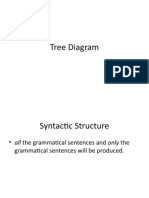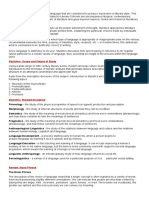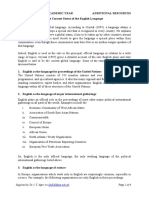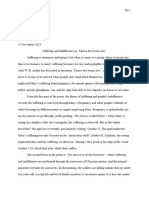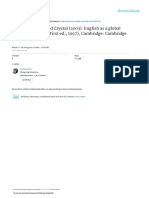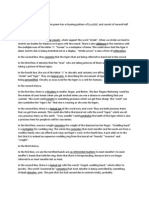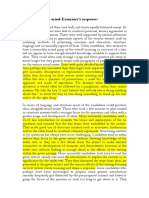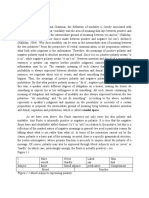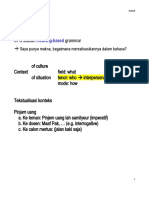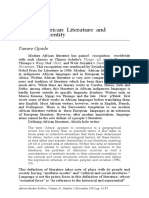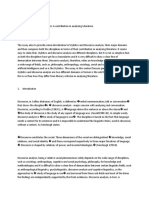0% found this document useful (0 votes)
403 views8 pagesClause Structure
This document discusses different clause structures in English grammar. It defines a clause as the key unit of grammar, consisting minimally of a subject and a verb. It describes seven basic clause structures: SVO, SV, SVA, SVC, SVOC, SVOA, and SVOO. It provides examples for each structure type and discusses how elements like subjects, verbs, objects, complements and adjuncts function within clauses.
Uploaded by
A06 - 38 - Lê Nguyễn Minh TríCopyright
© © All Rights Reserved
We take content rights seriously. If you suspect this is your content, claim it here.
Available Formats
Download as DOCX, PDF, TXT or read online on Scribd
0% found this document useful (0 votes)
403 views8 pagesClause Structure
This document discusses different clause structures in English grammar. It defines a clause as the key unit of grammar, consisting minimally of a subject and a verb. It describes seven basic clause structures: SVO, SV, SVA, SVC, SVOC, SVOA, and SVOO. It provides examples for each structure type and discusses how elements like subjects, verbs, objects, complements and adjuncts function within clauses.
Uploaded by
A06 - 38 - Lê Nguyễn Minh TríCopyright
© © All Rights Reserved
We take content rights seriously. If you suspect this is your content, claim it here.
Available Formats
Download as DOCX, PDF, TXT or read online on Scribd
/ 8






